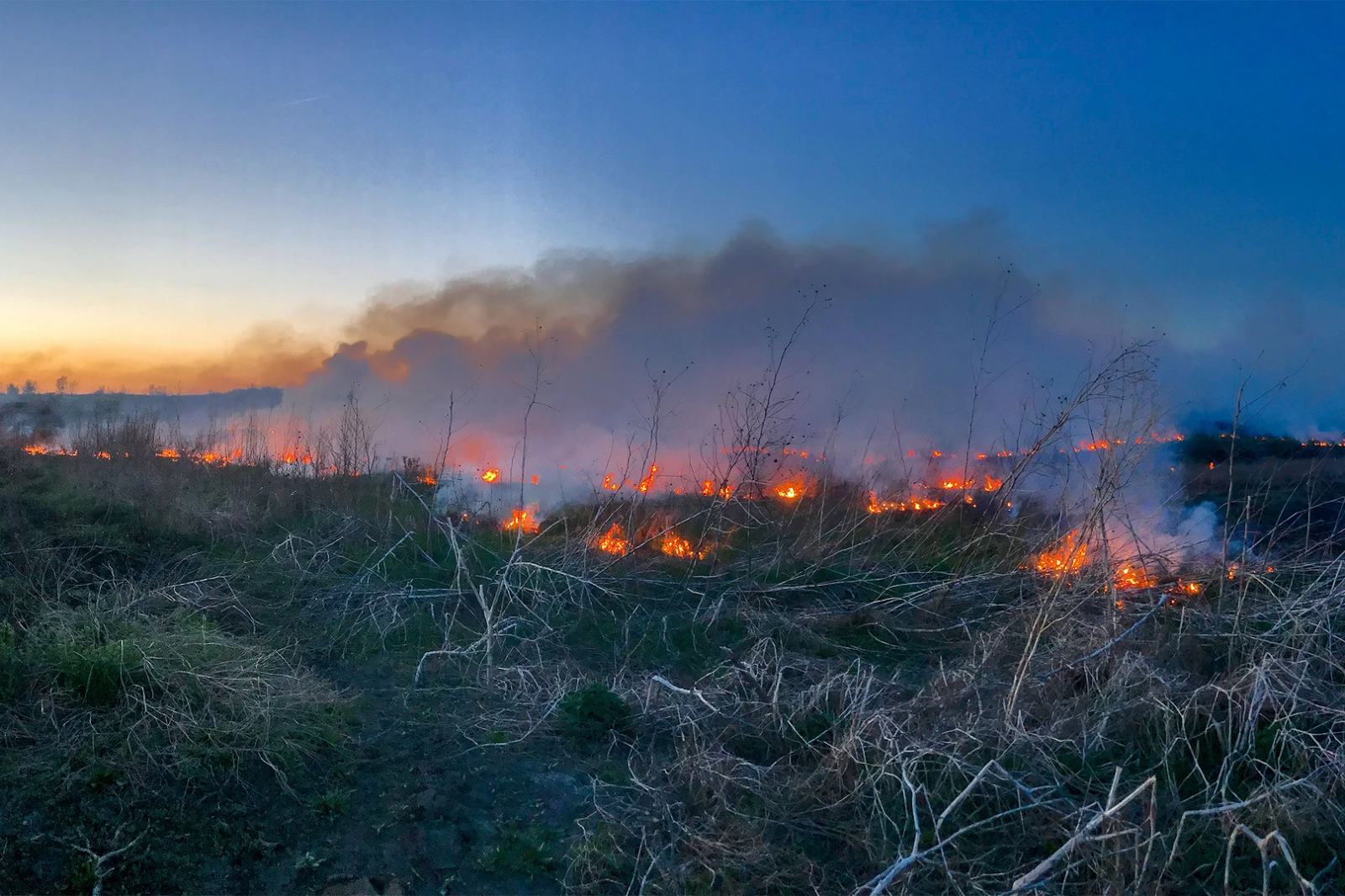The United States Farm Bill is a critical piece of agricultural legislation reviewed and passed every five years. The bill has a multitude of impacts on American life, but one of its most essential components is funding for the conservation of the natural environment.
For the National Audubon Society, access to the Farm Bill’s $60 billion in mandatory conservation funding is an important tool, enabling the nonprofit to work on its mission of conserving and restoring natural ecosystems, focusing on birds and other wildlife for the benefit of humanity.
Officially known as the Agriculture Improvement Act, the most recent Farm Bill was approved in 2018, and an extension was passed until Sept. 30, 2024. Meanwhile, an update is currently being debated in Congress. The bill is composed of 12 legislative pieces that have a massive impact on how food is grown, what types of food are grown, and the livelihood of growers, large and small. The over-800-page bill is vital to all American agricultural producers as it dictates what funding and resources are available to the farming industry.
It also has a tremendous impact on the country’s sustainable future. For Audubon, passing the Farm Bill’s conservation measures is do-or-die.

Photo Courtesy Brandon Finnorn/Audubon Photography Awards
“Audubon is advocating for a Farm Bill that provides stability for the American producer and incentives for protecting wildlife habitat on working lands,” Grayson Haynes, policy analyst at Audubon, told The Business Download. “Climate change is here; the effects are undeniable and negatively compound with the loss of suitable habitat across this country.”
“I believe we collectively need to be proactive and conscious of how we navigate feeding our country and sustainably managing natural resources into the next decade and beyond,” Haynes continued.
“A balanced investment in our land, wildlife, and people in this next Farm Bill is attainable through robust investment in trusted and proven voluntary conservation measures. The future of our communities, ecosystems, and climate depends on a successful Farm Bill.”
The situation for birds in America is dire. The Audubon Society shared some eye-opening facts with The Business Download: more than 50 million acres of grassland have been lost in the last 10 years. A recent Cornell University study indicates that nearly 3 billion birds have been lost since 1970. That’s one in four birds gone. Grassland birds are the hardest hit, with almost half the population lost.
Grassland habitat loss is likely a driving factor in this decline. The World Wildlife Fund considers North American grasslands one of the most critically imperiled ecosystems in the world, with only a few large, intact tracts remaining. More than 70% of America’s prairies have been destroyed.
In the Great Plains, 1.8 million acres of grassland habitat were lost in 2020, and another 10 million acres were plowed up. Grasslands hold approximately one-third of global terrestrial carbon stocks and provide resilience in the face of mounting issues like droughts, heat, and wildfires. Their loss affects not only the ecosystem’s health and that of birds but also the health of human communities.

Photo Courtesy Ed Hubbs/National Audubon Society
“Half of the land in the United States is privately owned,” Haynes said. “The number of large-scale farms is overtaking small farms rapidly, which has led to land development and habit loss.”
“We are working on salvaging habits on these private working lands, like ranches, to make those lands more suitable for birds, wildlife, and pollinators,” Haynes continued. “We want to make sure the natural cycles continue even though we have completely changed the lands.”
Most bird habitats along the great Mississippi Flyway have become corn or soil fields or beef ranches. The Farm Bill offers individual grants for conservation programs that help growers financially while improving their air, water, and soil.
Farmers historically have applied for these grants, and they are so popular that the applications exceed what the government can supply in funding. In fact, the Environmental Quality Incentives program alone had more than 9,000 applications for just $250 million available through Inflation Reduction Act monies.
Since the Farm Bill funding affects at least half of the land in the country, Audubon told The Business Download that funding application requests have recently been more than double the amount of funding offered.
That is part of why the nonprofit is advocating for an increase in that working land grant funding to ensure all farmers who want to enact these vital conservation measures on their land have the money to do so. The organization helps landowners apply for the right funding programs to maximize the conservation potential of their land.

Photo Courtesy Byron Jorjorian/Alamy/National Audubon Society
“For Audubon Great Plains, we find the best way to restore habitat is the kitchen table approach, meaning that you have to spend time with each landowner and spend time penciling out possibilities to find the best fit,” said Kristal Stoner, executive director of Audubon Great Plains. “Each landowner has their own goals for their land, and our job is to spend time learning more about their property, what they are trying to achieve, and explore options to increase the habitat value of their lands.”
“There isn’t a one-size-fits-all approach, so having different programs available is key,” Stoner continued. “One of the advantages of the Farm Bill is the different types of programs offered.”
“The Farm Bill is how we get conservation done on private lands,” added Alison Holloran, executive director of Audubon Rockies. “It’s critical funding for private ranchers and farmers to use. We help producers and farmers access it, and they access it on their own.”
“Those Farm Bill-funded programs do good things on the ground for birds and other wildlife,” Holloran continued. “There really is no other federal funding for private landowners than the Farm Bill provisions. Not being able to fund that impacts not only Audubon and the work we do but the ranchers and farmers themselves.”
Holloran calls the Farm Bill “very complicated,” worried that some conservation funding is in jeopardy. She said Audubon has three major focuses within the Farm Bill:
- That the funding is there,
- That the programs will be implemented, and
- That there is technical assistance to help farmers implement what they do.

Photo Courtesy Audubon: Rockies
“We are deep in the cycle of restoring the grassland habitats, and the first place we look is the Farm Bill. If we don’t have this money, there is none to restore and enhance these grassland habitats,” she said.
“Grassland birds are suffering the most, steepest declines. Without Farm Bill funds, there are very limited mechanisms for private landowners to get money to get conservation done on the ground.”
“Private landowners are overwhelmingly eager to assist with bird habitats; it shows up with the demand for the money,” Holloran continued. “Private landowners want to do good things for the birds. The best case scenario is that the promised, fully-funded $20 billion is passed. Losing that would be disastrous.”
It’s clear that the future of much of America’s bird habitat is tied up in the Farm Bill’s provisions. Audubon continues to push for its full passage to meet the funding needs of private landowners eager to help restore America’s vast bird habits and flyways.

Photo Courtesy Matt Stephenson/National Audubon Society
“The Farm Bill has done wonders for many species like pheasants, but now there are still so many in decline,” Stoner added. “As we learn more and more about our birds migrating across our hemisphere, landowners can and do play a critical role in bringing birds like the bobolink and meadowlark back to our prairies. Ideally, the Farm Bill conservation programs would be funded at more significant levels to help birds and other species of wildlife.”





